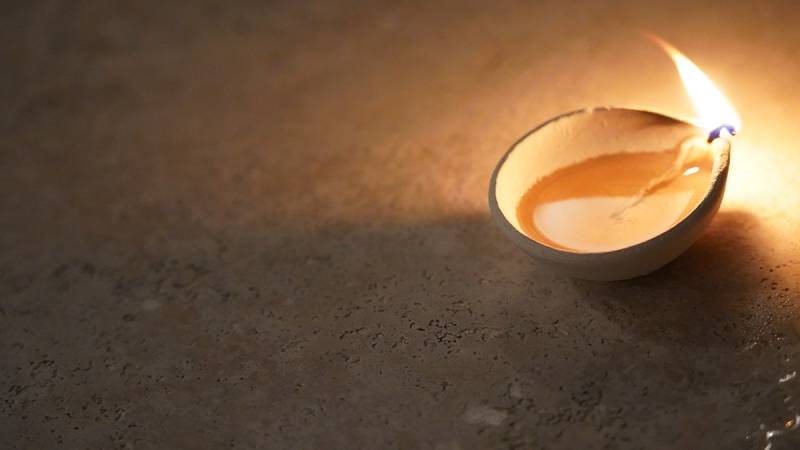The alarm trilled at 5:45am on Saturday, and I dragged myself out of bed to try making kaju katli for the first time. I grew up eating the diamond-shaped, store-bought versions of this cashew confection, lined with silver and gold foil, but it was never something we made at home. After a year of not seeing my family, sheltering-in-place, the election and everything in between, this labor of love was something I could pour myself into while dance-cooking listening to a Bollywood top hits playlist blaring in my headphones. It wasn't picture perfect or lined with shimmering foil, but making these sweets felt like my offering to my family.
It was going to be a Deepavali first, like so many other firsts this year. Unlike previous years, where I'd light the solitary candle or sparkler, my partner Zak Kirchner and I made a conscious decision to spend Halloween through New Years at my parents' place in Miami (we were careful by masking, sanitizing, quarantining and getting tested after we landed). With all that 2020 brought, we wanted to root ourselves in long-standing traditions, like lighting candles around the house, celebrating memories (like lighting mile-long firecrackers at my aunt's house in Nagercoil, India the year I moved to the Bay Area) and creating new ones as a new family.
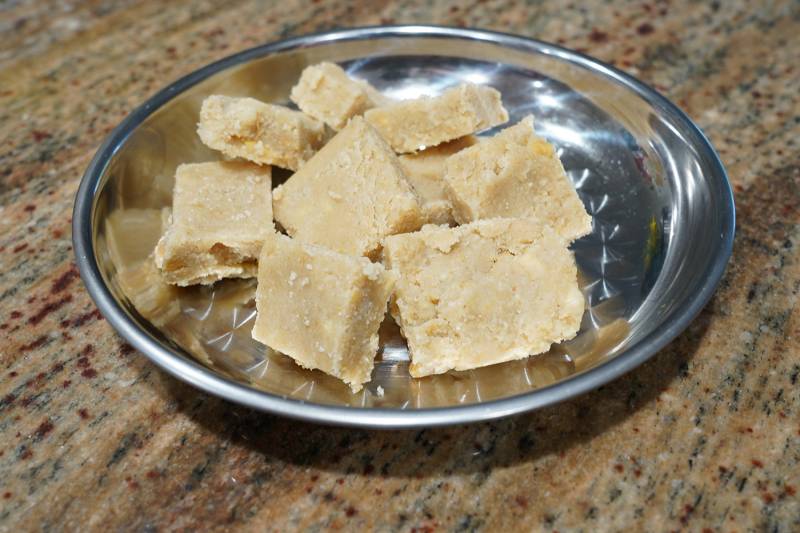
Deepavali (or Diwali) is essentially a celebration of light over darkness, unity over conflict. Like most holidays and foods, the way it's celebrated varies from region to region in India, and from family to family. For me, that means blending both Bengali and Tamilian traditions.
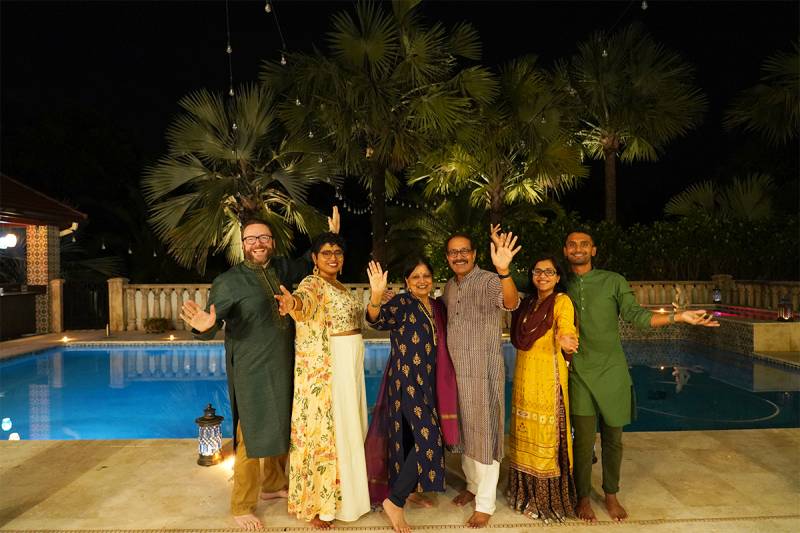
I grew up oscillating between my mother's Bengali traditions of Kali Puja and lighting the kuthu vilaku oil lamp with my father. The women would light tea candles around the house to welcome the goddess of wealth Lakshmi into the home. This year, as newlyweds, Zak and I celebrated our Thalai Deepavali. We sat cross-legged on a beach towel-lined yoga mat with my brother and his fiancé. My dad poured coconut oil into a stainless steel tumbler that was then poured onto our crowns. My father rubbed in the cool oil with his fingertips as some dripped down our necks onto our shoulders. My mother followed, then Zak, who rubbed oil onto our calves and arms. I followed as the next youngest, ending with my brother.
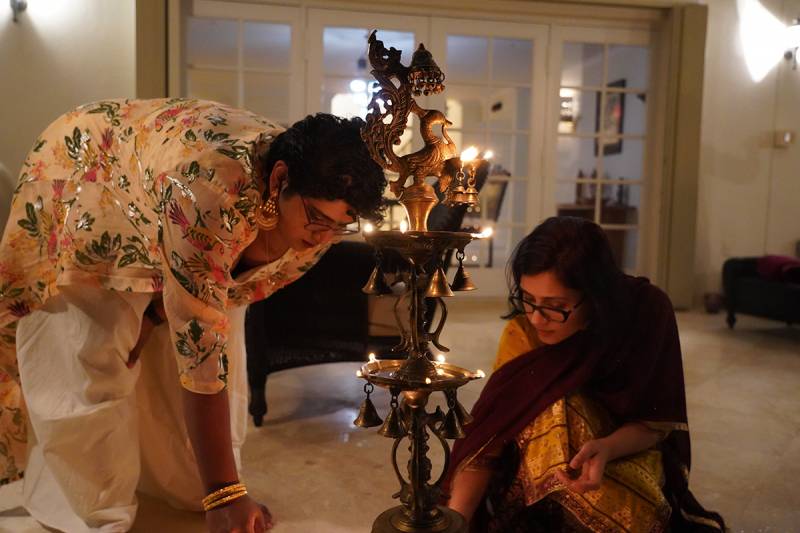
After, we showered and lit our own kuthu vilaku that we first lit as part of our marriage ceremony. I foraged betel leaves and hibiscus flowers from the backyard with my dad to prepare for prayers, got blessings from my parents and honored both of my grandparents with an offering of almonds and water. I read one of the only letters I had from my maternal grandmother titled "My Family," where she talked about how proud she was of all her children and how happy it made her. It's something I cherish every time because she died when I was two.
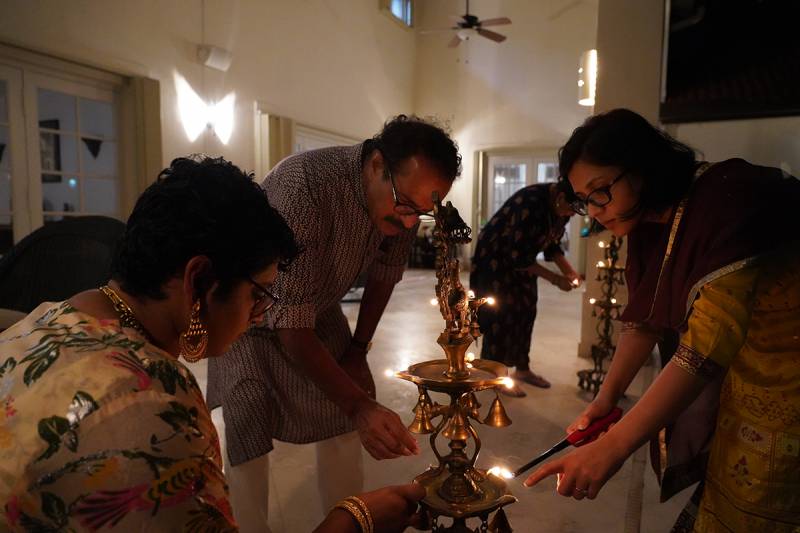
After, the kitchen was delightful hungama (mayhem) with the Mixi whirring to blend coconut chutney, the quiet sputter of dosa mavu (batter) hitting the hot tawa, the sizzle of mustard seeds and curry leaves hitting hot oil for a sambar thadka. Rava and paper dosa expanded in our stomachs as they continued to appear on our stainless steel plates, something I always associated with my trips visiting my dad's side of the family, dipping them in sambar, coconut chutney and milagai podi mixed with sesame oil.
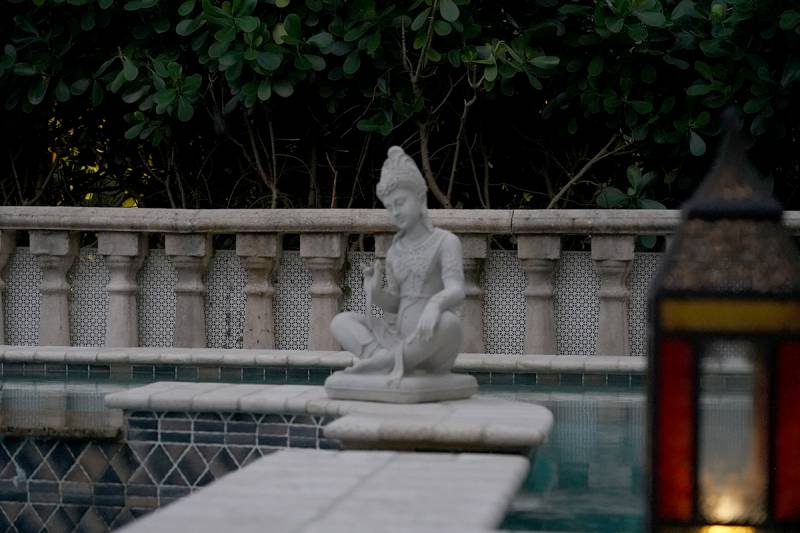
In the evening, we welcomed Lakshmi in by lighting candles and fireworks. This Deepavali was very different from all the others I've celebrated with Zak. It felt brighter and also heavier. Deepavali normally symbolizes the start of the holiday season for me, but this year it felt more like a needed welcoming of light.
